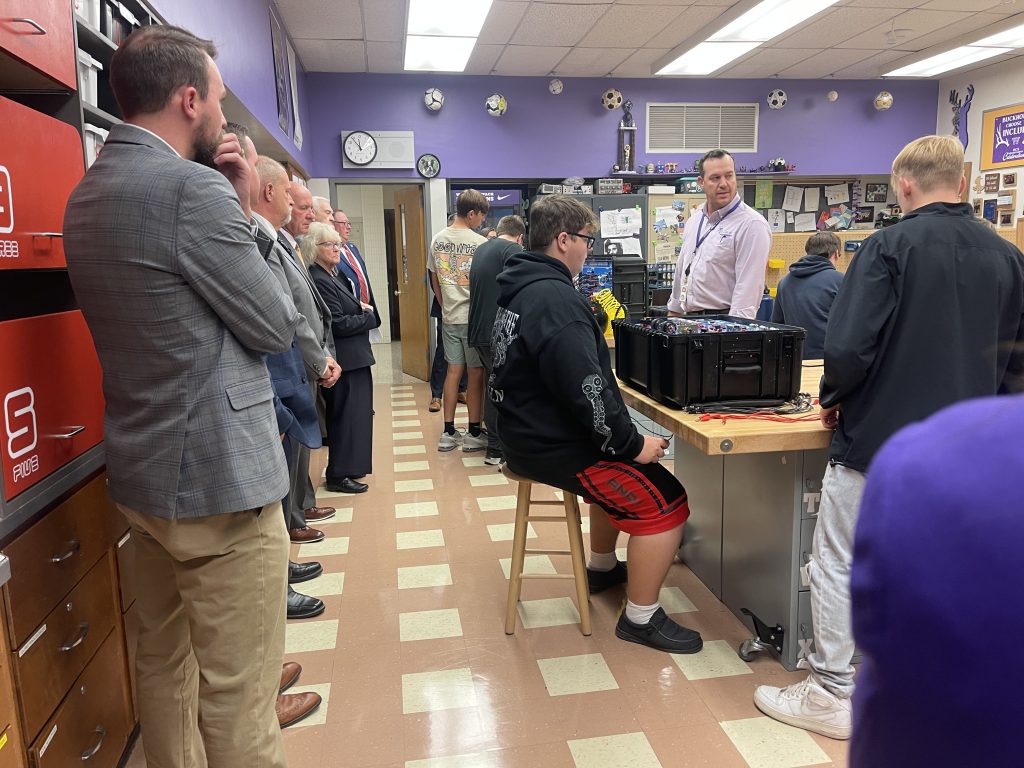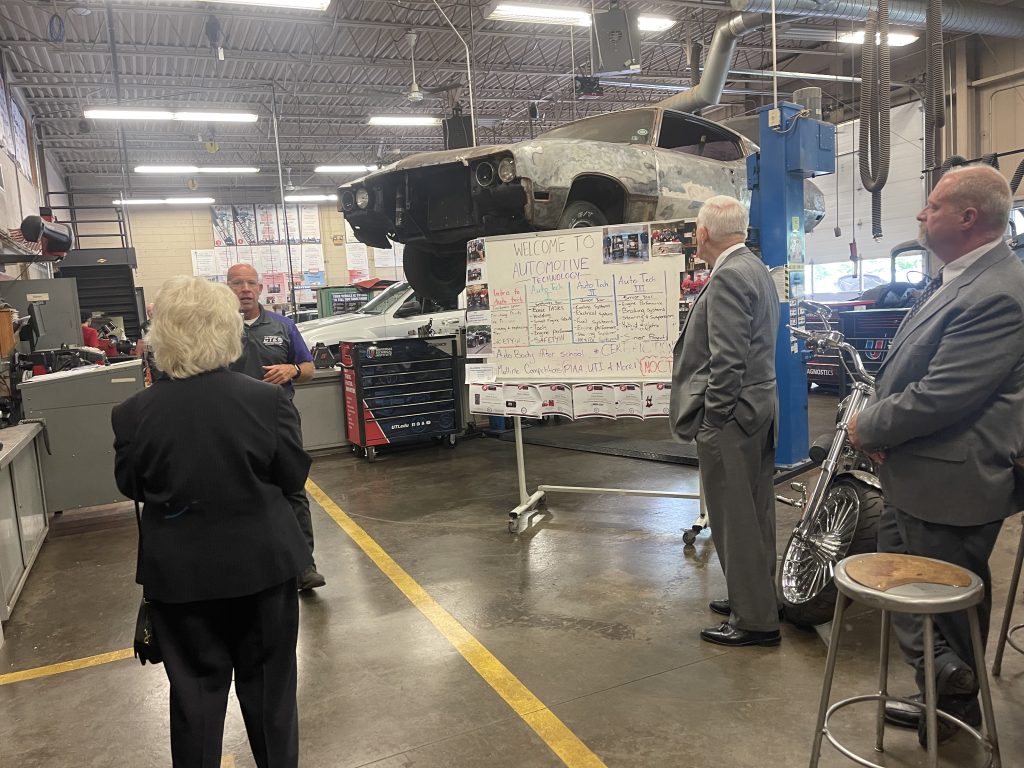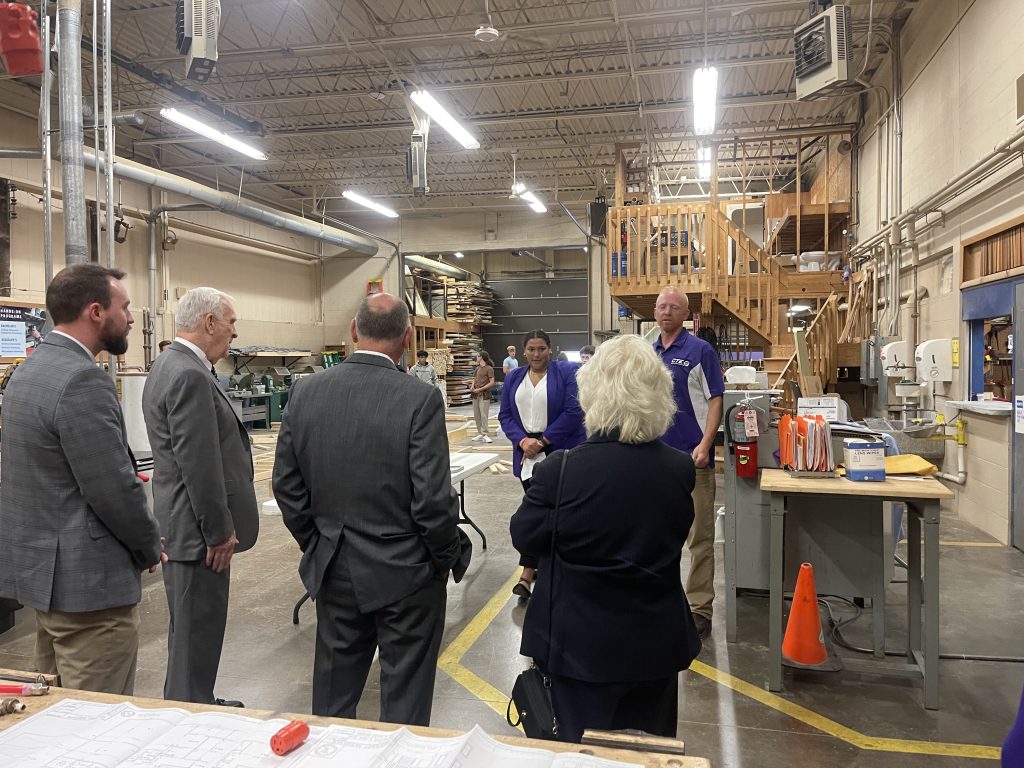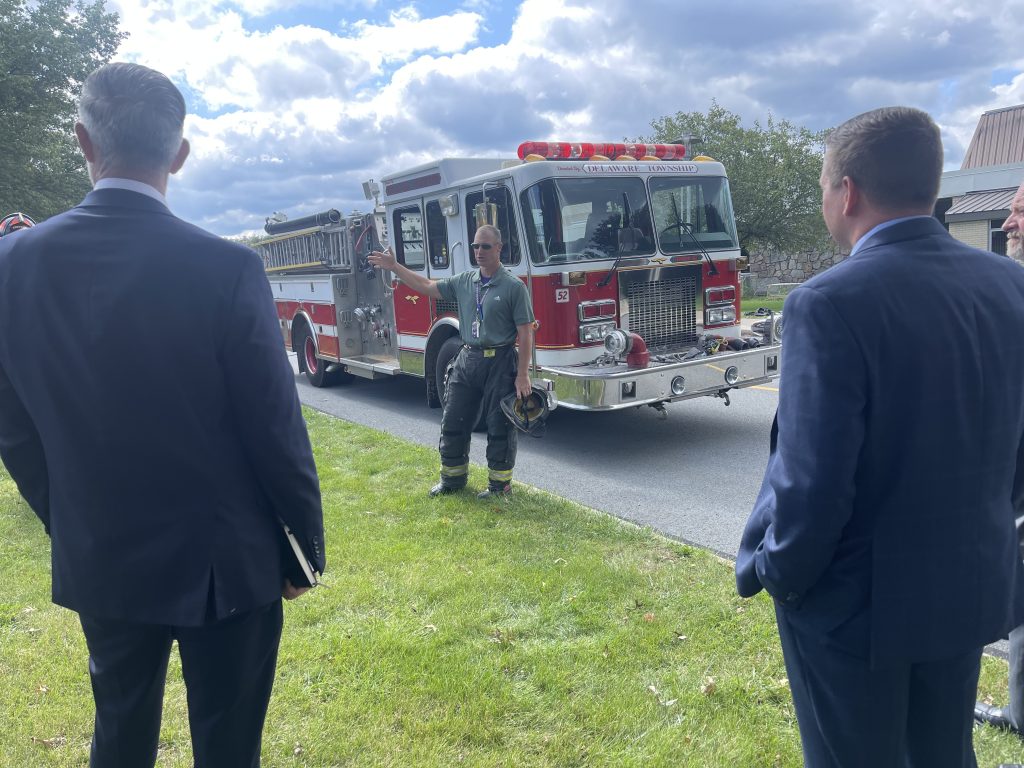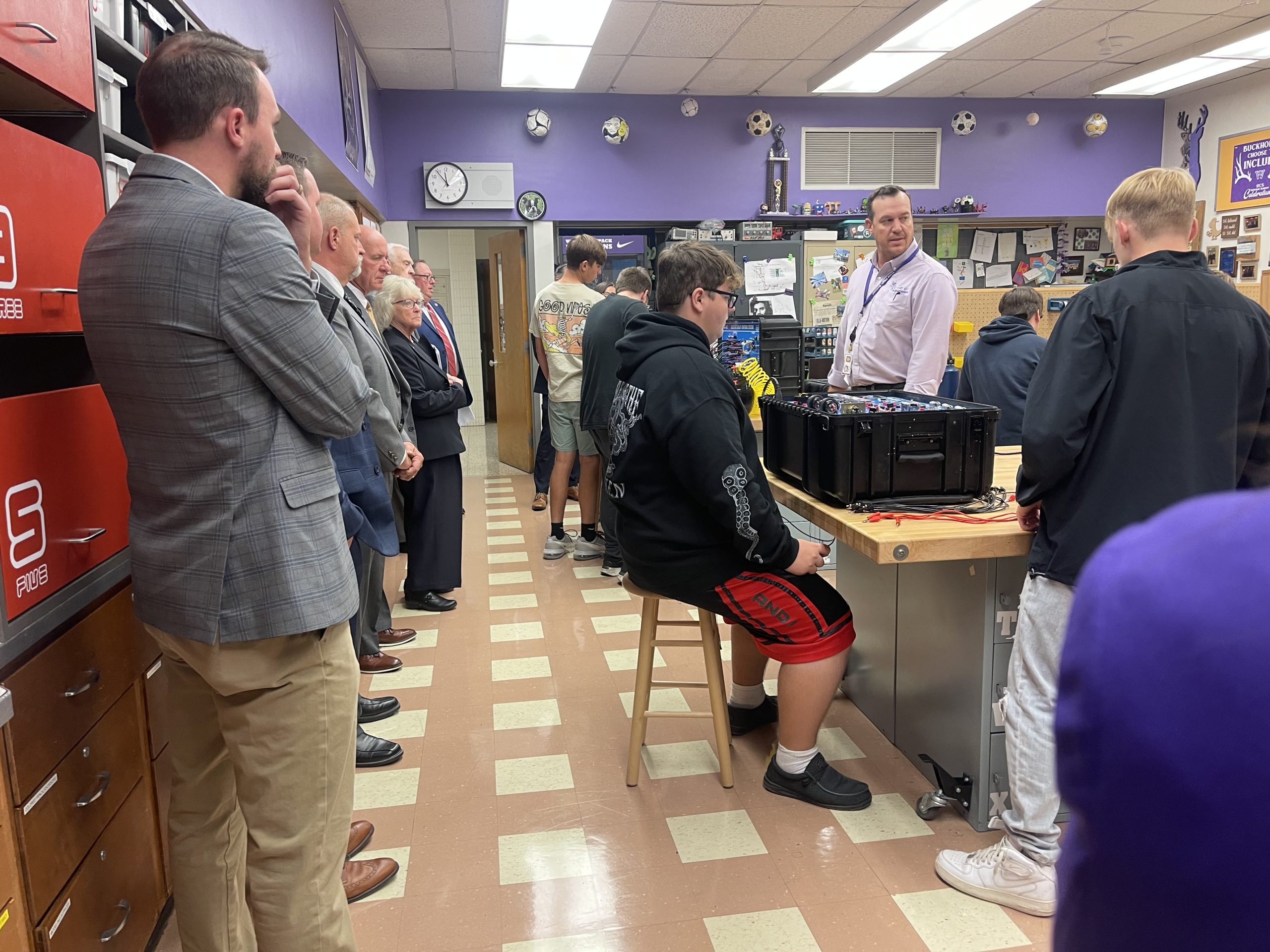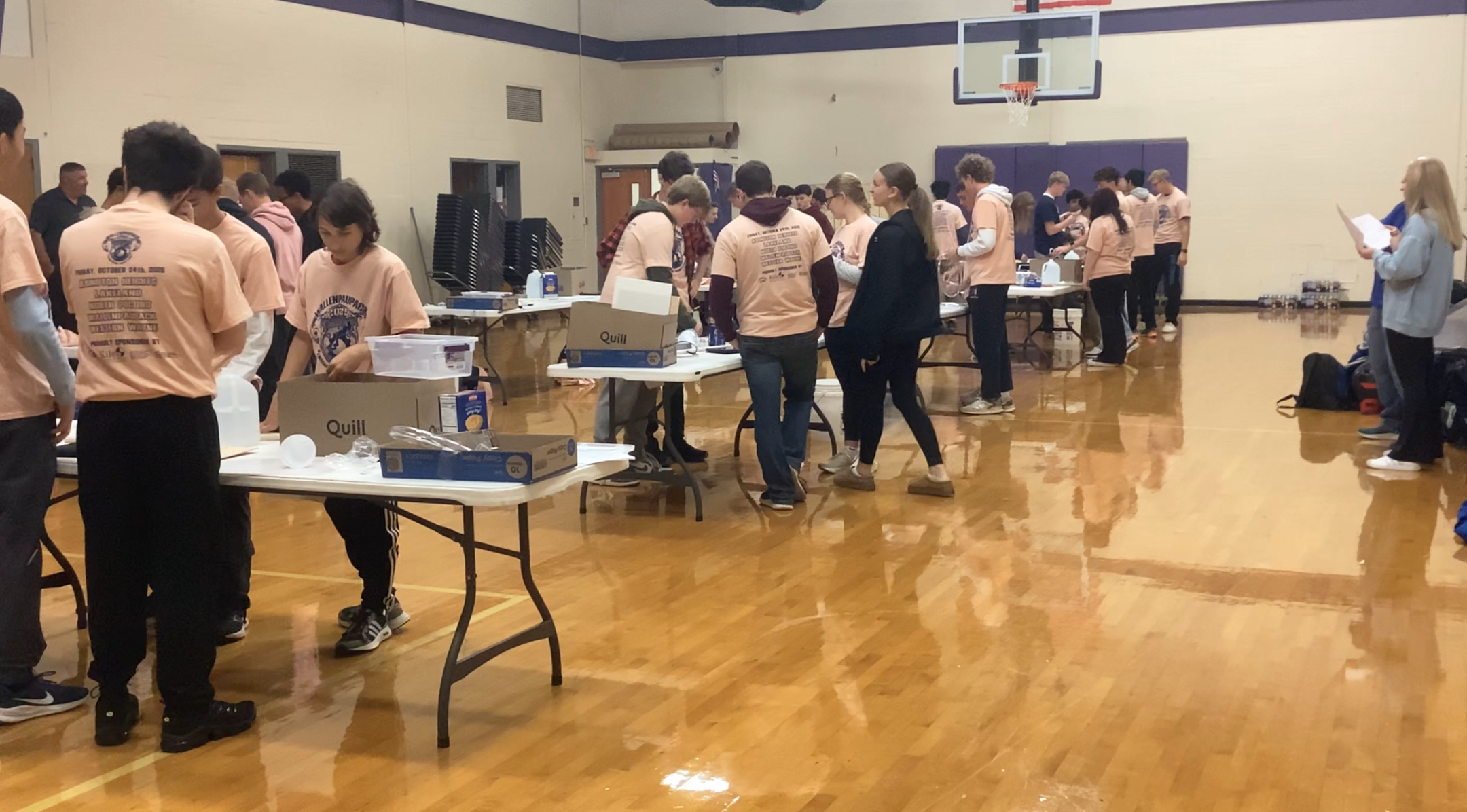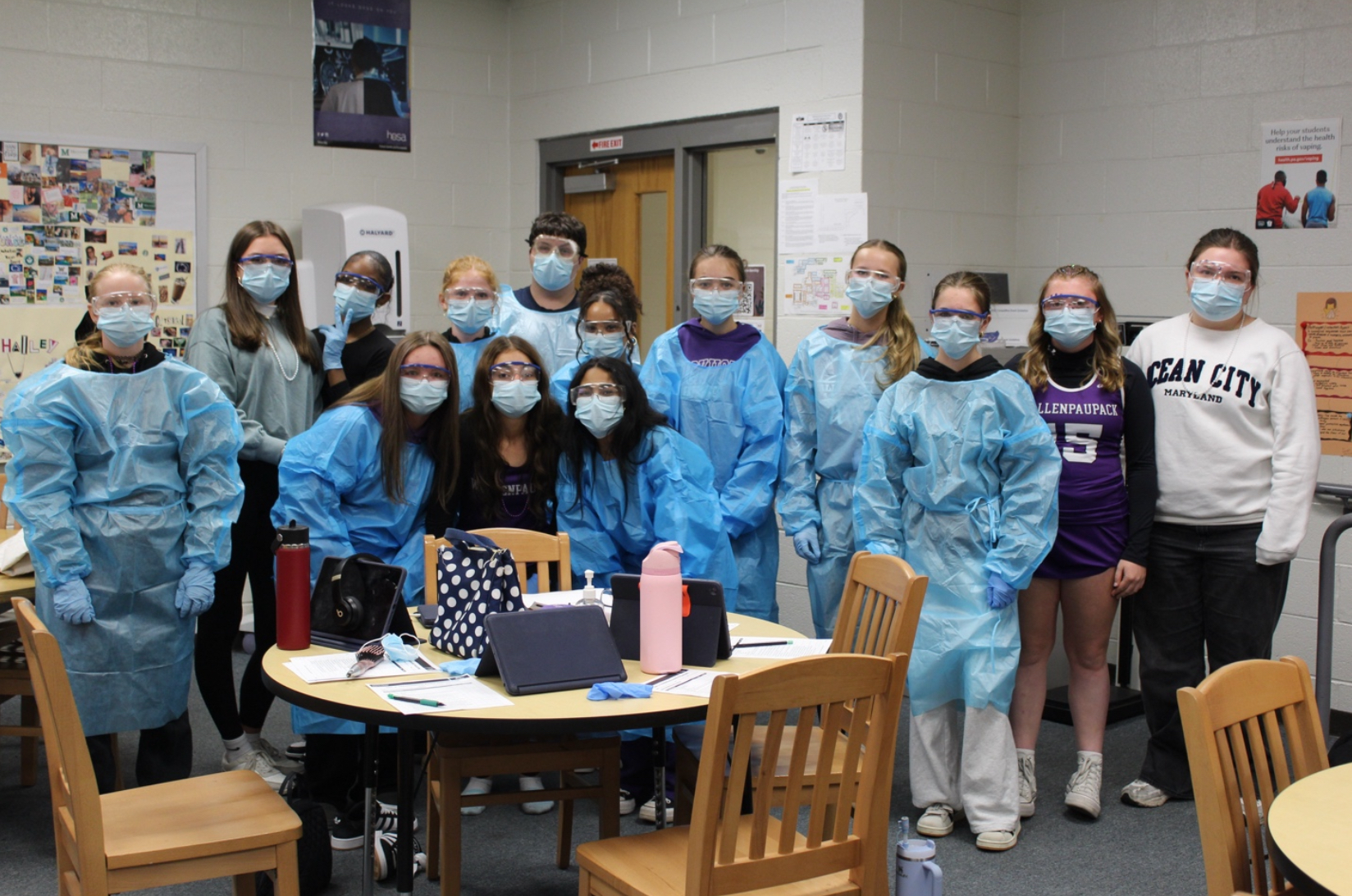Written by Lily Struble
On Tuesday, September 19, State Representative Joseph Adams (R-Pike/Wayne) hosted a hearing titled “Creating Educational Pipelines to Prosperity.” Our superintendent, Mr. Keith Gunuskey, Mrs. Mary Beth Wood (the executive director of Wayne Economic Development Corporation), and Dr. Joann Hudak (chairperson of the board for the Wayne Pike Workforce Alliance) all testified to the importance of building a Career Technical Center (CTC), aka a “VoTech” Center. The committee consisted of the host, Representative Adams, a Wallenpaupack Alumni and former staff member, Rep. Joshua D. Kail, the House Republican Policy Committee Chairman, and others.
There are 67 counties in Pennsylvania, all of which have a CTC except for two: Pike and Wayne. The four schools in these counties; Delaware Valley, Honesdale, Wallenpaupack, and Western Wayne all have individual CTE programs that are unnecessarily duplicated and bursting at the seams. An integrated CTC would allow for more students to have a higher level of technical education without having to leave their home district. While it is an option for students to attend other local schools to participate in one of their CTE’s, it means full-time transferring to that school and transportation is an all-day affair. A localized CTC would allow for half-day participation and students could return to their home-school in the other half.
Who?
The building would benefit students from all four districts, K-12. As early as kindergarten, students would be introduced to the CTC. As they get older, after school opportunities may become available, such as Chef Lewis’s Saturday cooking program which led to the Culinary Arts CTE awesome enrollment and having a waitlist.
It is possible that adults may participate in the CTC too. Other CTE’s in the state have models where adults are integrated with high-school students, or alternately have afternoon/evening programs for adults who wish to get training. Without any nearby colleges or CTC’s, the only current options for adults who wish to further their technical training is to travel to Scranton or further. This is discouraging for adults who may have full time jobs and other responsibilities and often leads to them not pursuing the training.
Labor groups and unions, as well as local colleges, would also likely participate. Mr. Gunuskey stated, “We have been contacted by Johnson College, Northampton College, and Lackawanna College, wanting to partner with us to ensure that…when we make our next steps to build this, that it’s also adult education friendly.”
Where?
A proposed location is behind the Wallenpaupack North Primary School where fifty-eight acres could be built upon. In any case, the CTC would need to be central in the two counties to providemaximum accessibility. While this project would cost an estimated $50 million, federal grants are available. After the initial investment, a Joint Operation Committee would be put in place to make decisions for the center with the goal of being self-sustaining. This committee would consist of members from all participating school districts and likely local workforces.
Participating schools may also act as satellite campuses. Delaware Valley has built a state-of-the-art automotive center, which may potentially be used by participating students. This would allow even more students to participate in the CTC without worry of cramming too many students in one garage.
Why?
This endeavor is about career readiness and job availability. Mrs. Mary Beth Wood spoke about a workforce management study that recommended reshaping the cultural perception of technical careers. Many students’ families may shame them for pursuing a technical career, further discouraging another generation from filling the labor jobs our state so desperately needs. Unfortunately, the only way to change this narrative is through exposure. If students are educated locally, they will see all of the opportunities around them and will be more likely to stay local. Industry growth will be supported by the CTC, allowing students to go straight into the workforce post-graduation.
Wayne County has a significant housing shortage. Construction companies need trained employees to meet their needs and qualifications. However, without any local CTC, Wayne and Pike counties are unable to contribute to the workforce shortage. Mr. Gunuskey spoke about the critically low supply of first responders. Wallenpaupack students who participate in all four years of the Protective Services Program graduate as certified EMTs, and with Firefighter One and Two certifications. This allows students to contribute to their community but also allows them to graduate with job stability. Students may even participate in a live-in program at a firehouse during college, saving them thousands of dollars.
Dr. Hudak spoke about the impact on women. Due to the pandemic, the availability of childcare has plummeted, causing a substantial number of women to be forced to leave their jobs to provide for their children. “The rate of women participating in the workforce today is at the same rate as in the 1970s,” Dr. Hudak stated. With the creation of a CTC, many more students may be certified in childcare skills, allowing more local women to participate in the workforce.
What?
The CTC would consist of at least twenty programs, if not more. Wallenpaupack’s existing automotive program could be split into Diesel Mechanics and Small Engine Repair, for example. New programs would become available too, such as Cosmetology, Computer Programming, and Hotel/Restaurant management.
Creating Educational Pipelines
Written by Lily Struble
On Tuesday, September 19, State Representative Joseph Adams (R-Pike/Wayne) hosted a hearing titled “Creating Educational Pipelines to Prosperity.” Our superintendent, Mr. Keith Gunuskey, Mrs. Mary Beth Wood (the executive director of Wayne Economic Development Corporation), and Dr. Joann Hudak (chairperson of the board for the Wayne Pike Workforce Alliance) all testified to the importance of building a Career Technical Center (CTC), aka a “VoTech” Center. The committee consisted of the host, Representative Adams, a Wallenpaupack Alumni and former staff member, Rep. Joshua D. Kail, the House Republican Policy Committee Chairman, and others.
There are 67 counties in Pennsylvania, all of which have a CTC except for two: Pike and Wayne. The four schools in these counties; Delaware Valley, Honesdale, Wallenpaupack, and Western Wayne all have individual CTE programs that are unnecessarily duplicated and bursting at the seams. An integrated CTC would allow for more students to have a higher level of technical education without having to leave their home district. While it is an option for students to attend other local schools to participate in one of their CTE’s, it means full-time transferring to that school and transportation is an all-day affair. A localized CTC would allow for half-day participation and students could return to their home-school in the other half.
Who?
The building would benefit students from all four districts, K-12. As early as kindergarten, students would be introduced to the CTC. As they get older, after school opportunities may become available, such as Chef Lewis’s Saturday cooking program which led to the Culinary Arts CTE awesome enrollment and having a waitlist.
It is possible that adults may participate in the CTC too. Other CTE’s in the state have models where adults are integrated with high-school students, or alternately have afternoon/evening programs for adults who wish to get training. Without any nearby colleges or CTC’s, the only current options for adults who wish to further their technical training is to travel to Scranton or further. This is discouraging for adults who may have full time jobs and other responsibilities and often leads to them not pursuing the training.
Labor groups and unions, as well as local colleges, would also likely participate. Mr. Gunuskey stated, “We have been contacted by Johnson College, Northampton College, and Lackawanna College, wanting to partner with us to ensure that…when we make our next steps to build this, that it’s also adult education friendly.”
Where?
A proposed location is behind the Wallenpaupack North Primary School where fifty-eight acres could be built upon. In any case, the CTC would need to be central in the two counties to providemaximum accessibility. While this project would cost an estimated $50 million, federal grants are available. After the initial investment, a Joint Operation Committee would be put in place to make decisions for the center with the goal of being self-sustaining. This committee would consist of members from all participating school districts and likely local workforces.
Participating schools may also act as satellite campuses. Delaware Valley has built a state-of-the-art automotive center, which may potentially be used by participating students. This would allow even more students to participate in the CTC without worry of cramming too many students in one garage.
Why?
This endeavor is about career readiness and job availability. Mrs. Mary Beth Wood spoke about a workforce management study that recommended reshaping the cultural perception of technical careers. Many students’ families may shame them for pursuing a technical career, further discouraging another generation from filling the labor jobs our state so desperately needs. Unfortunately, the only way to change this narrative is through exposure. If students are educated locally, they will see all of the opportunities around them and will be more likely to stay local. Industry growth will be supported by the CTC, allowing students to go straight into the workforce post-graduation.
Wayne County has a significant housing shortage. Construction companies need trained employees to meet their needs and qualifications. However, without any local CTC, Wayne and Pike counties are unable to contribute to the workforce shortage. Mr. Gunuskey spoke about the critically low supply of first responders. Wallenpaupack students who participate in all four years of the Protective Services Program graduate as certified EMTs, and with Firefighter One and Two certifications. This allows students to contribute to their community but also allows them to graduate with job stability. Students may even participate in a live-in program at a firehouse during college, saving them thousands of dollars.
Dr. Hudak spoke about the impact on women. Due to the pandemic, the availability of childcare has plummeted, causing a substantial number of women to be forced to leave their jobs to provide for their children. “The rate of women participating in the workforce today is at the same rate as in the 1970s,” Dr. Hudak stated. With the creation of a CTC, many more students may be certified in childcare skills, allowing more local women to participate in the workforce.
What?
The CTC would consist of at least twenty programs, if not more. Wallenpaupack’s existing automotive program could be split into Diesel Mechanics and Small Engine Repair, for example. New programs would become available too, such as Cosmetology, Computer Programming, and Hotel/Restaurant management.
